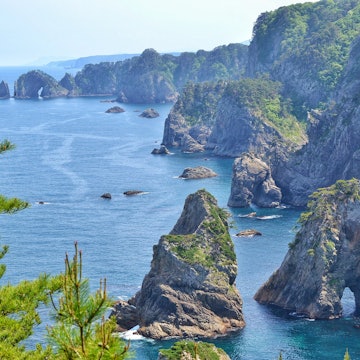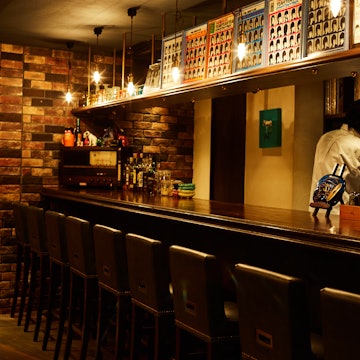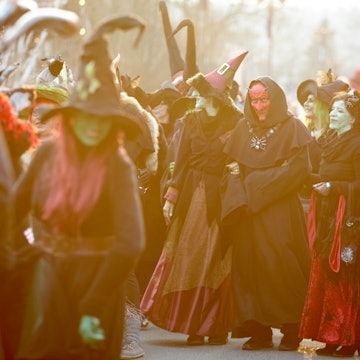
These attractions in Tokyo and Osaka will awaken your five senses
Sponsored by

Sep 29, 2021 • 8 min read

With its dramatic landscapes, one-of-a-kind cuisine, steaming onsen, fragrant ramen and bustling cities, Japan is a feast for the senses © Tokyo Convention & Visitors Bureau and Osaka Convention & Tourism Bureau
Japan is the kind of destination that catches your attention at every turn.
With its dramatic landscapes, one-of-a-kind cuisine, steaming onsen, fragrant ramen and bustling cities, Japan is a feast for the senses.
Prepare for a sensory awakening as we (re)discover an array of iconic destinations and attractions in Tokyo and Osaka – some brand new, some made classic by time – and explore them using all five of our senses.
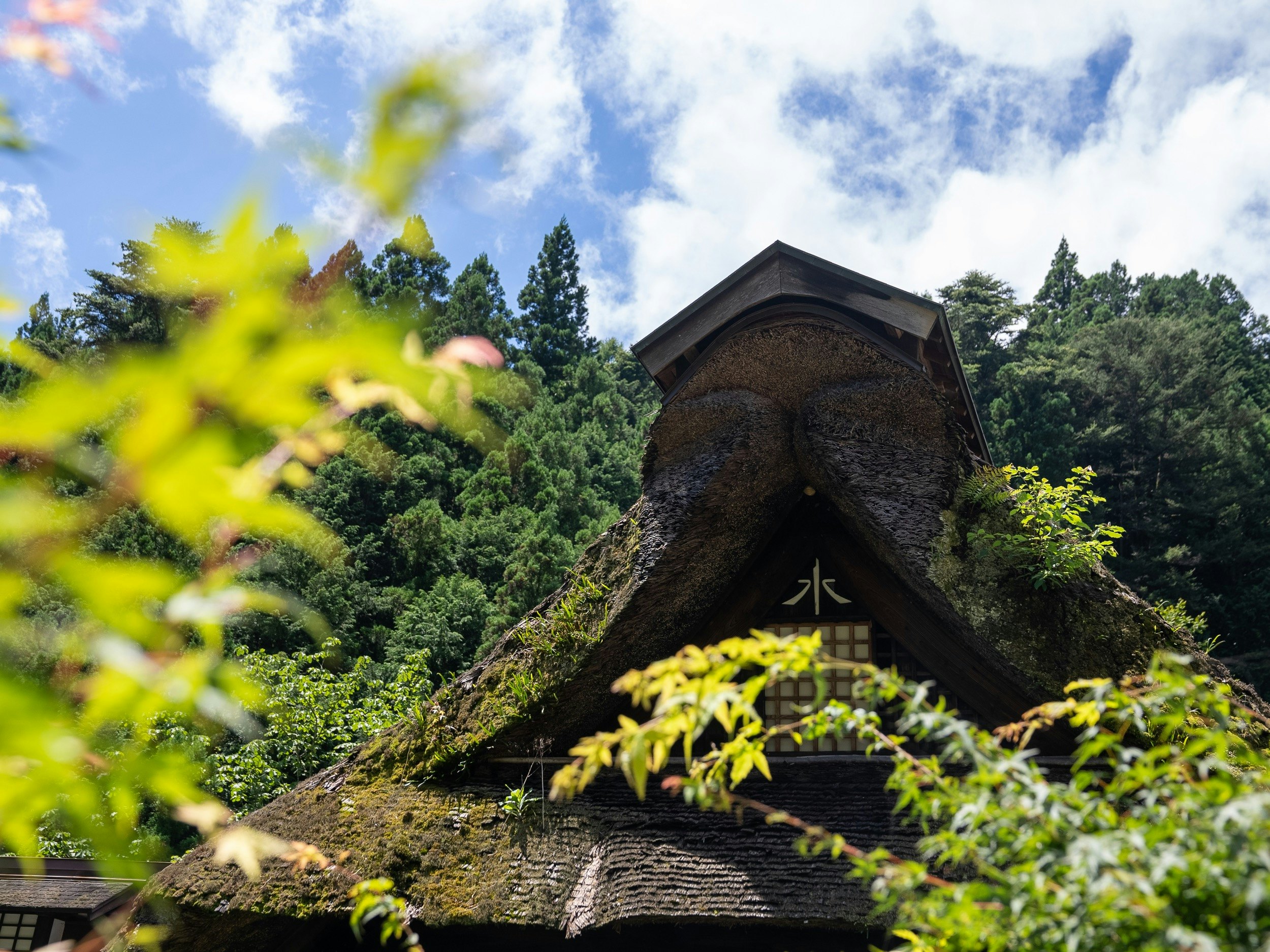
Touch: Tokyo’s Janoyu Onsen Takaraso
Located deep in the mountains of Hinohara Village in Tokyo’s far-west, Janoyu Onsen Takaraso is the only onsen (hot springs) in Tokyo that is part of the Japan Association of Secluded Hot Spring Inns.
Immerse yourself in the healing waters of Janoyu, which is attached to a 300-year-old thatch-roofed house in the distinctive shape of a warrior’s helmet. Janoyu literally means “snake onsen,” so-named after the legend of its founding in which a wounded serpent entered the waters and was healed of its ailments.
The hot spring water is renowned for being mushoku-toumei or “colorless and transparent” and together with the surrounding forest and the babbling of the river below, you’ll feel in touch both physically and spiritually with the natural surroundings.

Touch: Osaka’s esports hotel e-ZONe
From the traditional to the modern, this futuristic venue in Nipponbashi, Osaka, is Japan’s first dedicated e-sports hotel.
From the moment you step in, esports hotel e-ZONe makes an impression with its interior lighting that feels as if the subdued neon glow of a downtown alleyway at night-time has been brought indoors.
It provides the ideal environment for gaming, where visitors can get their hands on cutting-edge gaming equipment, such as high-spec computing systems, controllers and streaming equipment, while offering the opportunity to rest between sessions.
The 1st-3rd floors are exclusively for gaming, while the 4th-8th floors offer capsule-style bed accommodation, including one floor for women-only and a private room floor where guests can game and sleep in the privacy of their own room.

Taste: Tokyo’s Koji-ya Saburoemon miso factory
Koji-ya Saburoemon is the sole miso manufacturer in Tokyo’s 23 inner wards, where it has been operating in the district of Nerima-ku since 1939.
Originally founded during the Meiji era in Ibaraki Prefecture and now in its 7th generation, this family business prides itself on doing things the old-fashioned way.
Mechanization is avoided as much as possible with the vast majority of the process done by hand or “tezukuri”. This means that the color and flavor of each batch turns out slightly differently and it is these subtle variations characteristic of a handcrafted product that has customers clambering for its highly nuanced taste.
The factory sells its delicious, additive-free miso paste as well as at-home miso-making kits direct to the public via its shop, and even holds small group miso-making lessons by advanced reservation.

Taste: Osaka’s best food at Osakamon Cuisine Sora
Osaka is no stranger to good food. Renowned as “Japan’s Kitchen,” its incredible local ingredients, called Osakamon, are reasons to visit in and of themselves.
If you’re after delectable local cuisine at izakaya prices, you can’t look past the Horie branch of Osakamon Cuisine Sora. Here you can enjoy fish delivered fresh from Sakai’s Dejima Fishing Port, the offerings depending on the season and the daily catch, and a steady source of specialty meats not easily available elsewhere.
Regular menu offerings include Inunaki pork, usually sold out as soon as it goes to market. Combined with local drinks such as Minoh craft beer, wine from Kawachi, Amanosake from Kawachinagano and Tondasake from Settsu-Tonda, and you have an enviable meal you’ll be reminiscing about long after.
For the ultimate in high-end Osakamon cuisine, seek out Naniwa Kuroushi. This extremely rare Japanese black wagyu has been slowly fattened over a period of 30 months, resulting in a unique beef that manages to be both lean and highly-marbled. Its rarity means it usually only appears on the menus of the most exclusive restaurants.

Smell: Tokyo’s Ramen Menya Musashi
Located just 4 minutes’ walk from JR Shinjuku Station, the flagship restaurant of Menya Musashi takes a customer-centric approach to ramen-making, where taste is only a starting point.
For 25 years, Menya Musashi has maintained that just making delicious ramen is not enough and has focused on all aspects of the customer experience, starting from the moment the customer passes through the curtains of their shop until they go home.
Not least of all, this includes the incredible aroma of the ramen that beckons hungry passersby and whets the appetite both before and during the meal. Integral to this is the store’s specialty dashi or broth, which is made by mixing two types of soup: a bone-based broth made of chicken and pork bones, and a seafood-based broth of bonito and dried sardines.
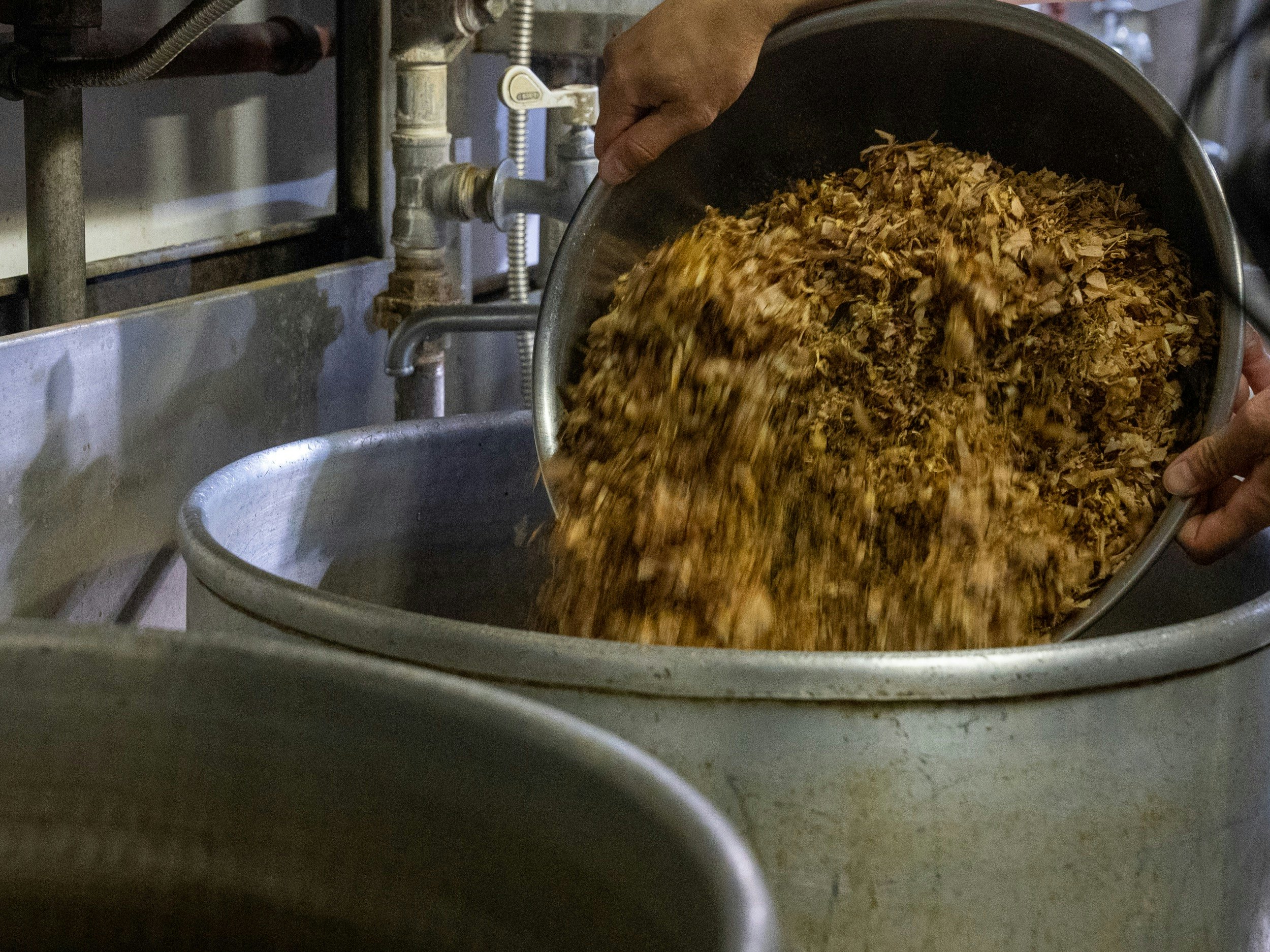
Smell: Osaka’s Udon-suki Mimiu
From its beginnings as a ryōtei (traditional Japanese fine-dining restaurant) some 250 years ago to its transformation into a specialty noodle shop, Mimiu is a veteran on the Osakan food scene.
Of the many original dishes the owners have created, udon-suki (a name combining udon and sukiyaki) made of seafood, vegetables and udon noodles cooked sukiyaki style in a broth, has become the most famous. While the dish, which is a registered trademark of Mimiu, is its signature menu item, the owners believe it is their tasty and aromatic dashi broth that is the true star.
Every day the broth, made of giant kelp, dried bullet mackerel and the finest dried bonito, is boiled for two hours, carefully tended to until a deep, concentrated umami flavor is achieved and the stock turns a clear golden color, making it just as much a delight to your nostrils as it is to your taste buds.

Hearing: Tokyo Shamisen
A shamisen is a three-stringed lute instrument with a long neck, often associated with geisha, kabuki plays and bunraku puppet theater. Originating in China, the instrument made its way to Japan via Okinawa and became popular around the late 16th Century.
For around 400 years it has developed alongside kabuki theatre, where it remains the principal instrument for the long, lyrical background music called nagauta.
In a typical year, live music events are held in summer at the Edo-Tokyo Museum and offer visitors the opportunity to get a close-up look at the instruments, how they are crafted and even try playing one for themselves.
At other times, those interested in the shamisen can visit Mukouyama Gakkiten, a musical instrument store in Tokyo, where certified traditional craftsman Masanari Mukouyama manufactures and repairs shamisen using traditional techniques that have not changed since the Edo period.
Used shamisen can be bought for as little as 20,000 yen (about $180 USD), and tours as well as hands-on experiences of the crafting process can be arranged by advanced reservation.

Hearing: Osaka Senshu Kiri-Tansu
Kiri-Tansu is the Japanese term for a traditional chest of drawers made of paulownia wood. Osaka was pivotal to the development of this furniture item, which became popular during the Edo period when the wealthy started requiring more storage for their extra kimonos and other goods, and later became a valuable gift upon marriage from a bride’s parents to her new in-laws.
Genuine, handcrafted paulownia chests using high-quality materials and time-honored techniques are valued for their longevity, and high moisture and fire resistance. Osaka’s Senshu Kiri-Tansu are distinguished by the thick timber used (which is dried naturally over a period of 1-3 years), the extensive joinery, and carefully applied finish.
Aged chests that are scratched or dirty – even those as many as 100 to 150 years old – can be repaired as if they were new and used for many more generations. It’s the perfect model of a sustainable development goal, a concept Kiri-Tansu has exemplified for centuries.
Those wanting to see and touch the incredible quality of an Osaka Senshu Kiri-Tansu can visit the Hatsune no Kiri-Tansu Showroom, where there are 80 permanently on display. Reservations can be made to visit the workshop where it is the mesmerizing sound of the artisans hard at work putting tool to timber that drives home the extraordinary craftsmanship.

Sight: Tokyo’s Hie shrine
The Hie shrine is one of the most important and revered shrines in Tokyo, dating to 1478 when it was erected on the grounds of Edo Castle, now the Imperial Palace. It has been at its current location since 1659 and was rebuilt in 1958 after being destroyed during WWII.
Today’s shrine is a tree-laden haven in the center of the city, situated on a shady hilltop between the business district of Akasaka and the government buildings of Nagatacho, where it is a favorite spot for local office workers wanting to surround themselves with beauty and tranquility during their lunch breaks.
Absolutely not-to-be-missed is the striking approach of 90 vermillion torii gates that make it one of the most photographed sights in Tokyo. In mid-June, it is also the location of the colorful Sanno Festival, one of the city’s three major Shinto festivals.
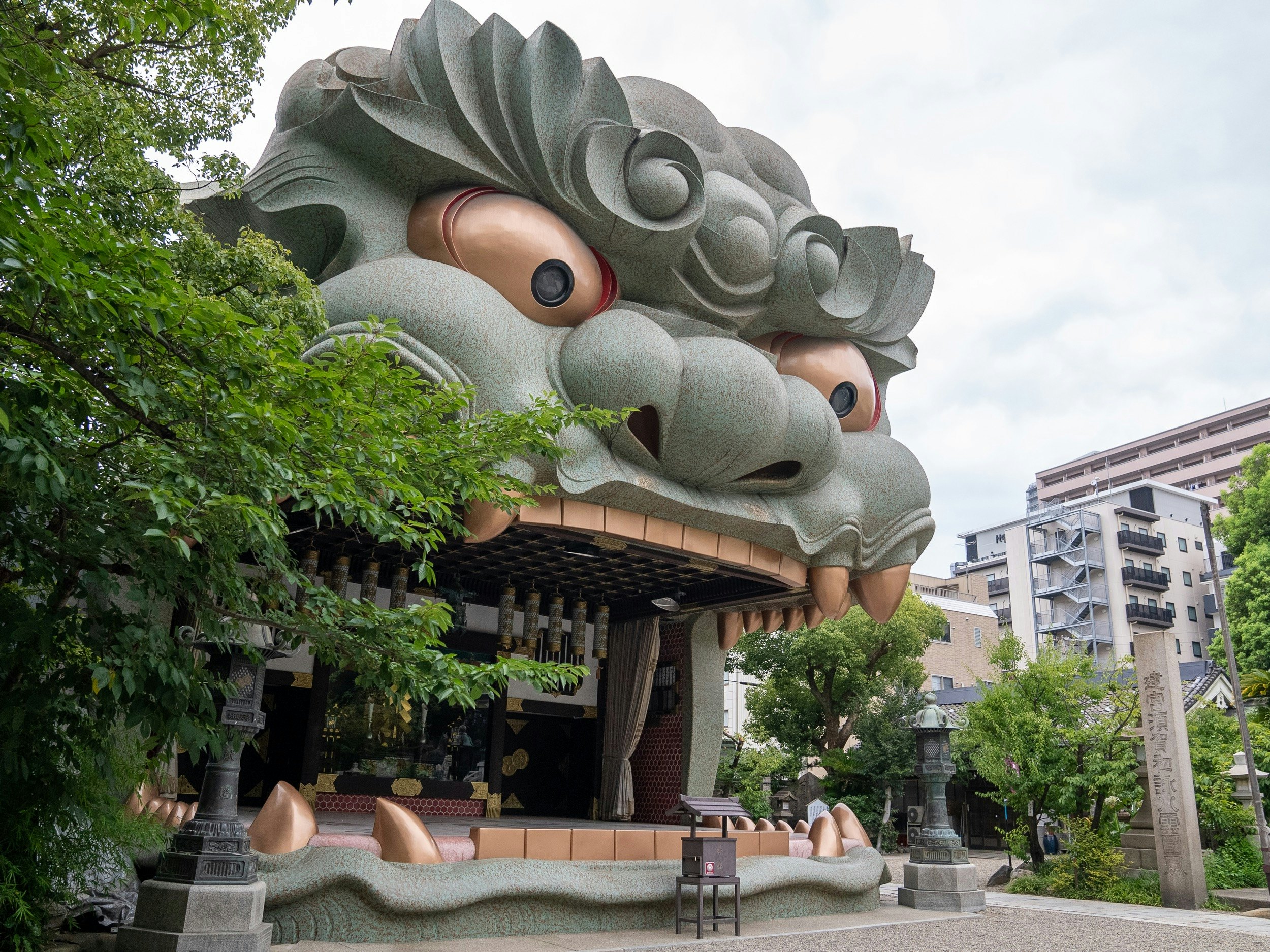
Sight: Osaka’s Namba Yasaka Shrine
The Namba Yasaka Shrine has been a part of Osaka’s history for at least a thousand years with first recorded mention of it stretching back to the reign of Emperor Go-Sanjō in the 11th Century.
The current shrine was built in 1974 and includes an eye-catching 12-meter-tall, 11-meter-wide building in the shape of a lion-dog’s head dedicated to the deity Susanoo-no-Mikoto who, according to Japanese myth, killed the large serpent monster, Yamata-no-Orochi, freeing the people from hardship.
On the third Sunday in January each year, a Tug-of-War Ritual is carried out to commemorate this legend in which a large, braided rope with eight loose ropes at either end representing the eight heads and eight tails of the serpent is pulled back and forth in a tug-of-war motion.
The rope is then placed on a traditional cart and paraded along the streets around the shrine. In 2001, this ritual was designated Osaka City's first intangible folk cultural property.
You might also like
Sponsored by Tokyo Convention & Visitors Bureau and Osaka Convention & Tourism Bureau
As a travel entertainment and inspirational media outlet, we sometimes incorporate brand sponsors into our efforts. This activity is clearly labeled across our platforms.
This story was crafted collaboratively between Tokyo Convention & Visitors Bureau and Osaka Convention & Tourism Bureau and Lonely Planet. Both parties provided research and curated content to produce this story. We disclose when information isn’t ours.
With sponsored content, both Lonely Planet and our brand partners have specific responsibilities:
-
Brand partner
Determines the concept, provides briefing, research material, and may provide feedback.
-
Lonely Planet
We provide expertise, firsthand insights, and verify with third-party sources when needed.









